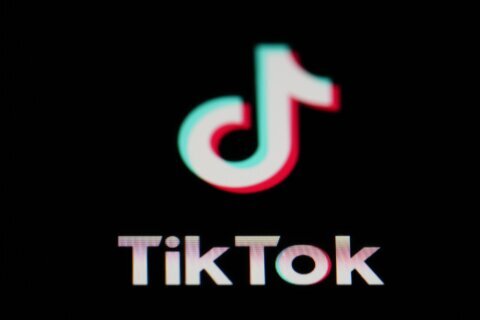Stick with sector ETFs to play a specific corner of the market.
In 1991, MSCI launched the Global Industry Classification Standard. This taxonomy segments the stock market into 11 distinct sectors: energy, materials, industrials, utilities, health care, financials, consumer discretionary, consumer staples, information technology, communication services and real estate. When it comes to portfolio management and asset allocation, sector investing can provide diversification benefits. For example, energy tends to outperform during inflationary periods, while financials tend to do well when interest rates rise. During a recession or bear market, utilities and consumer staples tend to be more resilient. When interest rates fall and the economy soars, information technology and communications services can grow rapidly. Investors interested in implementing a sector “tilt” in their portfolio can use exchange-traded funds, or ETFs, as a low-cost way of expressing a sector view. Here is a list of 11 great sector ETFs to buy in 2022.
Vanguard Information Technology ETF (ticker: VGT)
Vanguard is best known for its broad-market index funds, but the company also provides a strong set of sector-specific funds that boast low fees and a passive management approach. A good example here is VGT, which tracks the MSCI U.S. Investable Market Information Technology 25/50 Index. If you’re looking to bet on the U.S. information technology sector, VGT would be a good candidate for exposure. The ETF holds 357 U.S. tech stocks with a large-cap tilt, with top holdings of Apple Inc. (AAPL), Microsoft Corp. (MSFT), NVIDIA Corp. (NVDA) and Visa Inc. (V). Holding VGT will cost an expense ratio of 0.1%.
Energy Select Sector SPDR Fund (XLE)
State Street offers an array of 11 ETFs called “Select Sector” funds, each of which corresponds to a particular sector represented within the S&P 500. In this case, XLE tracks the Energy Select Sector Index, which comprises 21 S&P 500 constituent stocks involved in the oil and gas industry. The holdings are dominated by Exxon Mobil Corp. (XOM) and Chevron Corp. (CVX), with those two stocks cumulatively accounting for around 44% of the ETF. The energy sector performed strongly this year as commodity prices soared amid high inflation and supply chain constraints. If you want to buy XLE, it will cost you an expense ratio of 0.1%.
Vanguard Financials ETF (VFH)
If all this talk of rising interest rates makes you worry, consider hedging your portfolio with a tilt to financial sector stocks. Banks and asset managers tend to perform better under these conditions thanks to the higher rates they can charge on loans, which improves their top line. A great way to track the financial sector is by buying VFH, which holds 377 stocks including banks, asset management firms, insurance companies, exchanges and brokers. Notable holdings include Berkshire Hathaway Inc. (BRK.B), JPMorgan Chase & Co. (JPM), and Bank of America Corp. (BAC). As with most Vanguard funds, VFH costs a low management expense ratio, or MER, of 0.1% to hold.
iShares Core U.S. REIT ETF (USRT)
The U.S. real estate sector has done well since the 2008 financial crisis, posting strong growth amid resurgent housing prices and low mortgage interest rates. While some investors may be content with owning a home as their source of real estate sector exposure, others prefer to buy shares of real estate investment trusts, or REITs. A great pick here is USRT, which tracks the performance of 144 U.S. residential, industrial, retail, health care, office and hospitality REITs for a low 0.08% expense ratio. REITs don’t tend to be strongly correlated with the stock market, which produces a chance for good diversification benefits amid decent return potential.
Vanguard Consumer Staples ETF (VDC)
Consumer staple stocks tend to be excellent defensive picks thanks to how essential their products and services are. No matter the economic conditions, these companies tend to maintain their margins and profitability thanks to evergreen consumer demand. Well-known examples include food, beverage and household-essential companies like Coca-Cola Co. (KO), Procter & Gamble Co. (PG), Costco Wholesale Corp. (COST) and Walmart Inc. (WMT). A great way of gaining exposure is to buy VDC, which owns the four aforementioned tickers in its top 10 holdings in addition to 95 others. VDC costs an expense ratio of 0.1%.
Vanguard Consumer Discretionary ETF (VCR)
The opposite of VDC would be VCR, which tracks the consumer discretionary sector. This sector is comprised of companies that provide non-essential products and services. Examples include automobiles, luxury goods, restaurants and leisure products such as toys, electronics and sporting equipment. Consumer discretionary stocks tend to be cyclical, performing well in times of economic expansion as consumers spend freely, but do poorly during recessions when budgets tighten. Notable top holdings among the 305 stocks in VCR include Amazon Inc. (AMZN), Tesla Inc. (TSLA) and McDonald’s Corp. (MCD). Like the previous Vanguard ETFs, VCR also costs an expense ratio of 0.1%.
iShares S&P 500 Communications Sector UCITS ETF (IUCM)
The communications sector is an example of “old meets new,” being comprised of traditional wireline and wireless telecommunications providers, television and radio, but also newer services like internet streaming, video communications and social media. This juxtaposition makes the sector an interesting investment to hold, as established legacy companies like Walt Disney (DIS), Verizon Communications Inc. (VZ), and Comcast Corp. (CMCSA) compete with internet giants like Meta Platforms Inc. (FB) and Alphabet Inc. (GOOG, GOOGL). If you’re bullish on these companies, IUCM might be a good buy. The ETF holds the five aforementioned tickers in its top holdings along with 21 more and charges an expense ratio of 0.15%.
Vanguard Utilities Index Fund ETF (VPU)
Another great defensive pick for your portfolio could be VPU, which holds 64 stocks from the U.S. utilities sector. Historically, the utilities sector has exhibited a lower correlation with the broader U.S. stock market and has been less volatile as well. This, along with the heavily regulated nature of U.S. utilities service providers, potentially makes the sector a good anchor against market turmoil. Year to date, VPU has lost significantly less than the broader market despite the sell-off in equities. VPU also costs a 0.1% expense ratio and pays a decent 30-day SEC yield of 2.8%, thanks to the high dividends paid out by utility stocks.
Health Care Select Sector SPDR Fund (XLV)
The health care sector consists of stocks of companies involved in the production and provision of pharmaceuticals, health care equipment and supplies, health care services, biotechnology and insurance. The sector has an essential nature and has historically been a strong, albeit slightly cyclical, long-term investment. Buying a health care sector ETF like XLV will grant you access to 65 S&P 500-listed health care stocks, with notable tickers being United Health Group Inc. (UNH), Johnson & Johnson (JNJ) and Pfizer Inc. (PFE). This sector outperformed in 2021 thanks to the tail wind of the COVID-19 pandemic and vaccine distribution. Buying XLV will cost a 0.1% expense ratio.
iShares U.S. Basic Materials ETF (IYM)
The basic materials sector produces the basic building blocks for our infrastructure, manufacturers and other applications. Companies in this sector produce basic goods such as metals, chemicals and forestry products. As supply chain constraints and soaring inflation became a hot issue this year, stocks in this sector did particularly well. A good way to ride that momentum is by buying IYM, which holds 37 U.S. basic materials stocks like Freeport McMoRan Inc. (FCX), Newmont Corp. (NEM), and Air Products & Chemicals Inc. (APD). However, IYM is more expensive than the previous ETFs on this list with an expense ratio of 0.41%.
Industrial Select Sector SPDR Fund (XLI)
The industrials sector is diverse in terms of what types of services and products each company offers, but there is a common feature: the use of heavy equipment and machinery. Engineering firms, construction companies, defense contractors, aerospace manufacturers, railroads, airlines and logistic companies are all represented within the industrials sector. Buying XLI grants exposure to 72 blue-chip industrial sector stocks represented in the S&P 500. Notable top holdings include Union Pacific Corp. (UNP), Raytheon Technologies Corp. (RTX), Honeywell International Inc. (HON), 3M Co. (MMM) and Boeing Co. (BA). Like the other Select Sector funds, XLI costs an expense ratio of 0.1%.
Top sector ETFs to buy:
— Vanguard Information Technology ETF (VGT)
— Energy Select Sector SPDR Fund (XLE)
— Vanguard Financials ETF (VFH)
— iShares Core U.S. REIT ETF (USRT)
— Vanguard Consumer Staples ETF (VDC)
— Vanguard Consumer Discretionary ETF (VCR)
— iShares S&P 500 Communications Sector UCITS ETF (IUCM)
— Vanguard Utilities Index Fund ETF (VPU)
— Health Care Select Sector SPDR Fund (XLV)
— iShares U.S. Basic Materials ETF (IYM)
— Industrial Select Sector SPDR Fund (XLI)
More from U.S. News
7 Stocks That Soar in a Recession
7 Best-Performing ETFs of 2022
11 Top Sector ETFs to Buy originally appeared on usnews.com
Update 05/09/22: This story was published at an earlier date and has been updated with new information.







